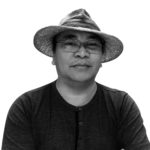
When a Cebuano or a Boholano dies, his soul is immediately brought by a god named Maguayen into a world below the ground, an infernal region whether he or she lived a good life or not. That unnamed hellish world was ruled by two gods, Simuran and Singuinarugun, whose most important task was to judge the worthiness of the dead’s soul to proceed to a world above the ground, a kind of heaven as it were.
This was according to Miguel de Loarca, a Spanish official in the Miguel Lopez de Legazpi expedition who was initially given the thriving settlement of Oton (present-day Iloilo) to govern.
Nearly a hundred years later, the Jesuit historian Ignacio Alcina, writing mostly of the society and culture of the Central and Eastern Visayas, confirms Loarca’s writings that our ancestors believed in three contiguous worlds: an infernal world of punishment and judgment below the ground, the living world on the ground and a world above akin to a kind of heaven.
With more detail, Alcina tells us that when a person dies, all the dead go into a world called Saad, ruled by a god named Badadum. Unlike Loarca’s infernal region, Saad is described more like a kind of Elyssian Fields with a river. When someone dies, it is Badadum’s task to organize a welcoming committee composed of all the dead relatives of this recently departed to gather beside this river. Badadum’s main task is to open the “lungun” or coffin of the recently departed as it flows into the river.
Upon opening he will check if the dead is adorned with gold and jewelry and if so, would then be recognized as worthy and sent to a town called Baraias, ruled by Badadum’s father, Ayaw. There the dead would live out the same life as in his or her previous existence, presumably a life of wealthy splendor. This preference for gold and trappings of wealth like jewelry were a result of the inegalitarian nature of Visayan society following the development of foreign trade that emerged some 1000 years ago. This resulted in surplus wealth for those that controlled the trade and the emergence of classes based on access to such extra or surplus wealth.
The poor, alas, are not as lucky, for they would be unrecognized by Badadum and therefore not permitted to live in Baraias. A worse fate befalls those who die by drowning: their souls will forever remain underwater to be marked by ritual practitioners called Baylan, Babaylan, Daitan or Asug with an effigy of the deceased made of bamboo dressed with the dead’s clothes. The most honorable death was when one succumbs from an arrow or a dagger or is killed by a crocodile, for he or she immediately goes to heaven via a “bangaw” or rainbow and then becomes a god. This clearly alludes to a preference for brave men and women warriors.
Then as now, an important tradition among the dead was for people to praise his or her goodness and exploits when he/she was still alive.
Professional mourners were paid to wail and compose chants about the dead person’s accomplishments in life, if the family could afford them. Then as now, no one spoke ill of the dead. In fact laughter was forbidden in the village the moment a chief or datu dies. Anyone passing by the village had to keep quiet or else become enslaved or incur a curse.
Death was a most serious affair especially for the immediate family. The widow or widower was required to shave off their hair, part of which would be buried with the dead. The immediate family was required to fast, eating only vegetables. This fasting happen while guests and visitors are served the best meats and all kinds of food and drinks, if one could afford it. Nothing can be more torturous than this.
While the professional mourners lament in chants, the dead body is washed and applied with the best of aromatic herbs, the most preferred being that of the buyo palm (Areca sp.), which is also pressed into the coffin. Truly a society of simple inequality by the time the Spaniards arrived, the rich were laid in the best hardwood coffins, chopped by slaves from a nearby forest following a selection made by the “babaylan” or “asug.” The poor, on the other hand, would just be buried on coffins made of “amakan” or woven bamboo slats.
Before placement into the coffin, the rich would be wrapped in white shrouds made of cotton sheets (“habol”) in a shrouding ceremony that can involve up to ten sheets. The poor, on the other hand, would probably just have one. And as the wealthy deceased is bound in these sheets, gold pieces are inserted into each sheet as the wrapping of the body proceeds.
By the way, the “baylan” or “babaylan” or “daitan” start as young girls who initially live normally until they enter into some kind of a trance. Following such an event, they are then determined to be worthy (“katuuran” or “katuuhan”) and then seen by village members as gifted. The “asug,” on the other hand, approximate present day homosexuals who also got into a sudden and unexpected trance state when still a boy.
When you talk to your dead relatives in the cemetery today and tomorrow and ask favors from them, you are partaking of an aspect of our precolonial beliefs system: ancestor worship. Know well therefore that we have so many practices today that may have roots not in Christianity but in the animist religion of our ancestors.